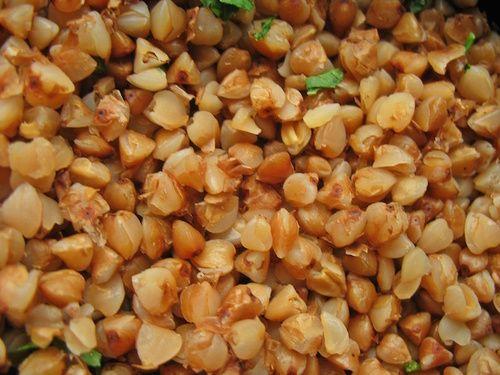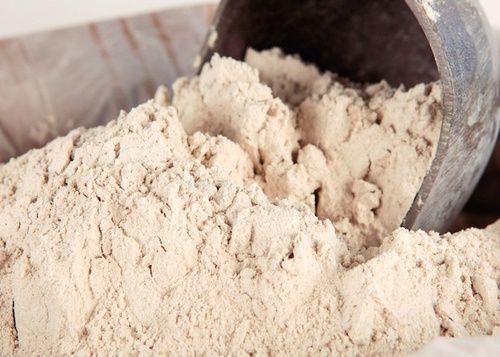Buckwheat flour it is obtained by grinding buckwheat, or Fagopyrum esculentum. Rich in proteins and vitamins, especially B vitamins, buckwheat flour helps eliminate excess fluids from the body. Let's find out better.
> 1. How buckwheat flour is made
> 2. Properties and use of buckwheat flour
> 3. Products based on buckwheat flour
How buckwheat flour is made
Buckwheat flour is derived from buckwheat, Fagopyrum esculentum, a herbaceous plant belonging to the Polygonaceae family. The plant is native to Asia and was introduced in Europe by the Turks during the Middle Ages.
The buckwheat plant can reach one meter in height and its grains have a triangular shape; after harvesting, the grains of dark color and triangular shape, called archeni, they are dried in the sun for about twenty days before being threshed and ground.
Properties and use of buckwheat flour
From the nutritional picture of buckwheat flour, it results a good vitamin content: B vitamins and precisely vitamins B1, B2, B3, B5 and B6; Vitamin E is also present.
Buckwheat also consists of acqua, from dietary fiber, ashi, carbohydrates, proteins and fats; moderate presence of minerals (calcium, phosphorus, potassium, magnesium, zinc, manganese and iron).
- amino acids present are: alanine, arginine, cystine, aspartic acid, glutamic acid, glycine, isoleucine, lysine, methionine, valine, threonine, proline and tyrosine.
Buckwheat contains many protein, so much so that it is compared to meat and soy and recommended in cases of physical deterioration. Buckwheat flour, thanks to its composition, helps eliminate excess fluids from the body and has a revitalizing action on the kidneys and heart, thanks to the presence of a substance called rutin, it prevents capillary fragility.
This flour it is excellent for those suffering from celiac disease, as it does not contain gluten.
Properties, calories and nutritional values of buckwheat

Buckwheat flour products
With buckwheat flour you can do it bread, biscuits, crêpes, but also focaccia, pancakes, desserts and pizzas. It can be used pure or mixed with wheat flour and rice flour.
Buckwheat flour is excellent for making pizzoccheri and polenta. Surprisingly, it is also used as natural cosmetic for washing hands and body: just pour a small amount into the palm of your wet hand and rub, it will form a cleansing paste that does not dry out the skin.
This flour can be found in almost all the most well-stocked supermarkets and specialized shops, even online.
A recipe up your sleeve
Buckwheat crêpes, gallettes of sarrasin, are a particular version of the classic crêpes, prepared with buckwheat flour. They are one of the most typical recipes of Brittany, especially consumed as a single dish.
Ingredients:
> 250 grams of buckwheat flour,
> 2 eggs,
> 25cl of water,
> 25cl of milk,
> salt and pepper
Produce: Mix all the ingredients together, leaving the mixture to rest for about a quarter of an hour in the refrigerator. Prepare the crêpes one by one, in a non-stick pan, greasing it with a little oil or butter. The filling of these galettes is salty: you can indulge in cheeses (brie, fontina), eggs or other dishes you like.
Properties, use and characteristics of wheat sprouts
Other articles on buckwheat:
> Buckwheat seeds, benefits and uses
> Buckwheat leaves: benefits, toxicity, uses
> Buckwheat: nutritious and gluten-free
> 3 light recipes with buckwheat
| Honeyville.com



























